What Should an Employee Handbook Include?
Workplace success often boils down to clear communication, and your employee handbook plays a major role in getting everyone on the same page. Fostering a harmonious and productive work environment requires more than just a competent team. It demands a clear understanding of your company culture, policies and procedures, and expectations.
In this article, we’ll unravel the complexities of creating an effective employee handbook, breaking the process down into simple steps. So, whether you’re refining an existing handbook or starting from scratch, our practical tips will help you create a successful handbook.
What is an Employee Handbook?
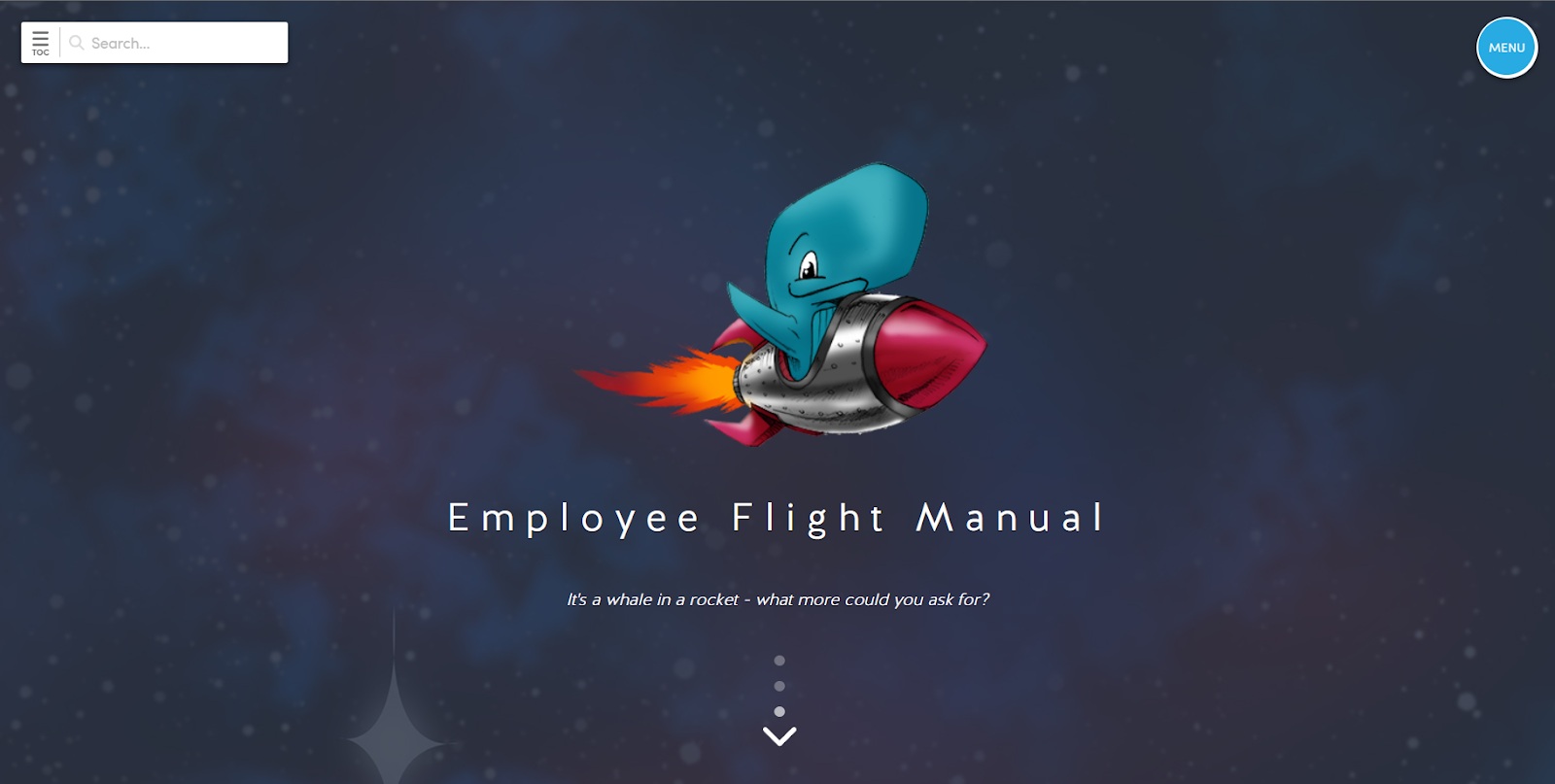
An employee handbook is a navigational tool that guides employees through their journey in your organization. It’s an important resource that outlines the company’s policies, procedures, and expectations. The best employee handbooks also showcase your organization’s culture.
Covering everything from work hours to conflict resolution, your handbook is a go-to resource for employees and a protective shield for employers in case of workplace misunderstandings.
Far from just a set of rules, it’s a living document that evolves with your company, setting the tone for an engaging, inclusive, and transparent workplace.
Benefits of an Employee Handbook
From promoting legal compliance to resolving conflicts, an employee handbook guides organizations toward success in several ways.
Here are some of the benefits of creating an employee handbook.
Handbook Benefit #1 – Communicate Expectations
An employee handbook emphasizes expectations — not only the expectations you have of employees, but what they can expect from your organization, too. Handbooks help promote a harmonious work environment by clearly outlining expectations from the start, leading to better understanding and fewer surprises.
For example, your employee handbook should communicate expectations regarding attendance, social media use, and outside employment (moonlighting).
Handbook Benefit #2 – Encourage Legal Compliance
Employee handbooks help communicate the policies an organization has in place to ensure adherence to relevant employment laws and regulations. Examples of these policies include anti-discrimination and harassment policies, equal employment opportunity statements, and time off under the Family and Medical Leave Act (FMLA).
Handbook Benefit #3 – Highlight Employee Rights and Benefits
A handbook should also inform employees of their rights and other benefits, including leave and vacation policies, requesting reasonable accommodations, and employee assistance programs. This empowers employees by ensuring they understand the benefits and resources available to them.
Handbook Benefit #4 – Promote Consistency and Fairness
By providing uniform guidelines in your handbook, you can help ensure fair and equitable employee treatment. Everyone at your organization should be subject to the same policies and procedures, reducing the risk of perceived favoritism or discrimination.
Handbook Benefit #5 – Reduce and Resolve Conflicts
In cases of disputes or conflicts, your handbook can serve as a reference point for both employees and management. It provides a framework for addressing grievances, communicating disciplinary procedures, and resolving disputes.
What Sections Should You Include in Your Employee Handbook?
Though your employee handbook should be unique to your organization, many handbooks include these common elements.
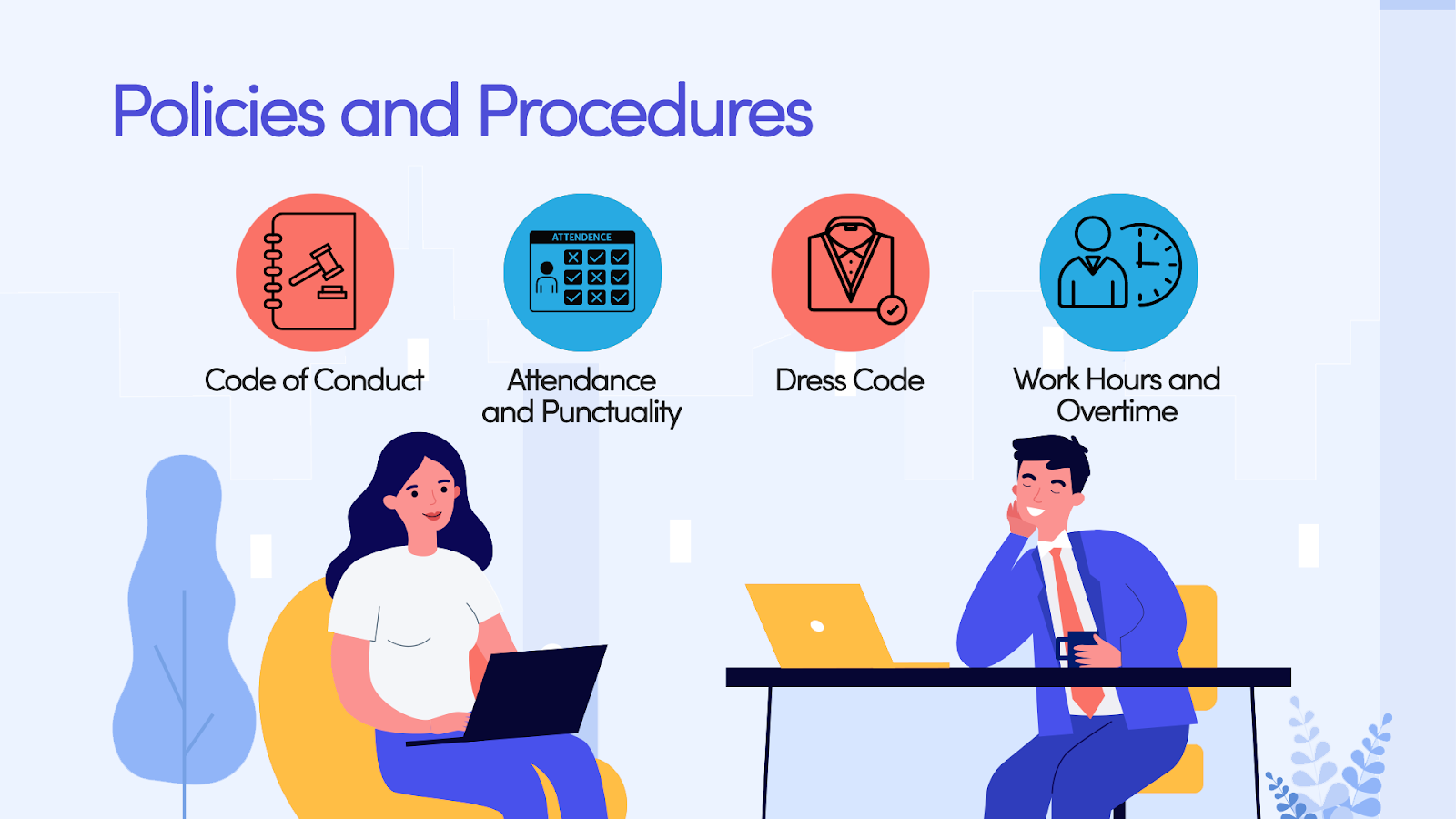
Company Overview
An employee handbook should begin with an introduction to the organization. It’s great to start with a welcome letter, followed by additional cultural content like your company’s mission, vision, and values. This helps you articulate why your company exists, what you hope to accomplish as a team, and the guiding principles that will get you there.
In this handbook (created using Blissbook!), Daxko, a leading software company, introduces its culture in a way that’s easy for employees to understand.
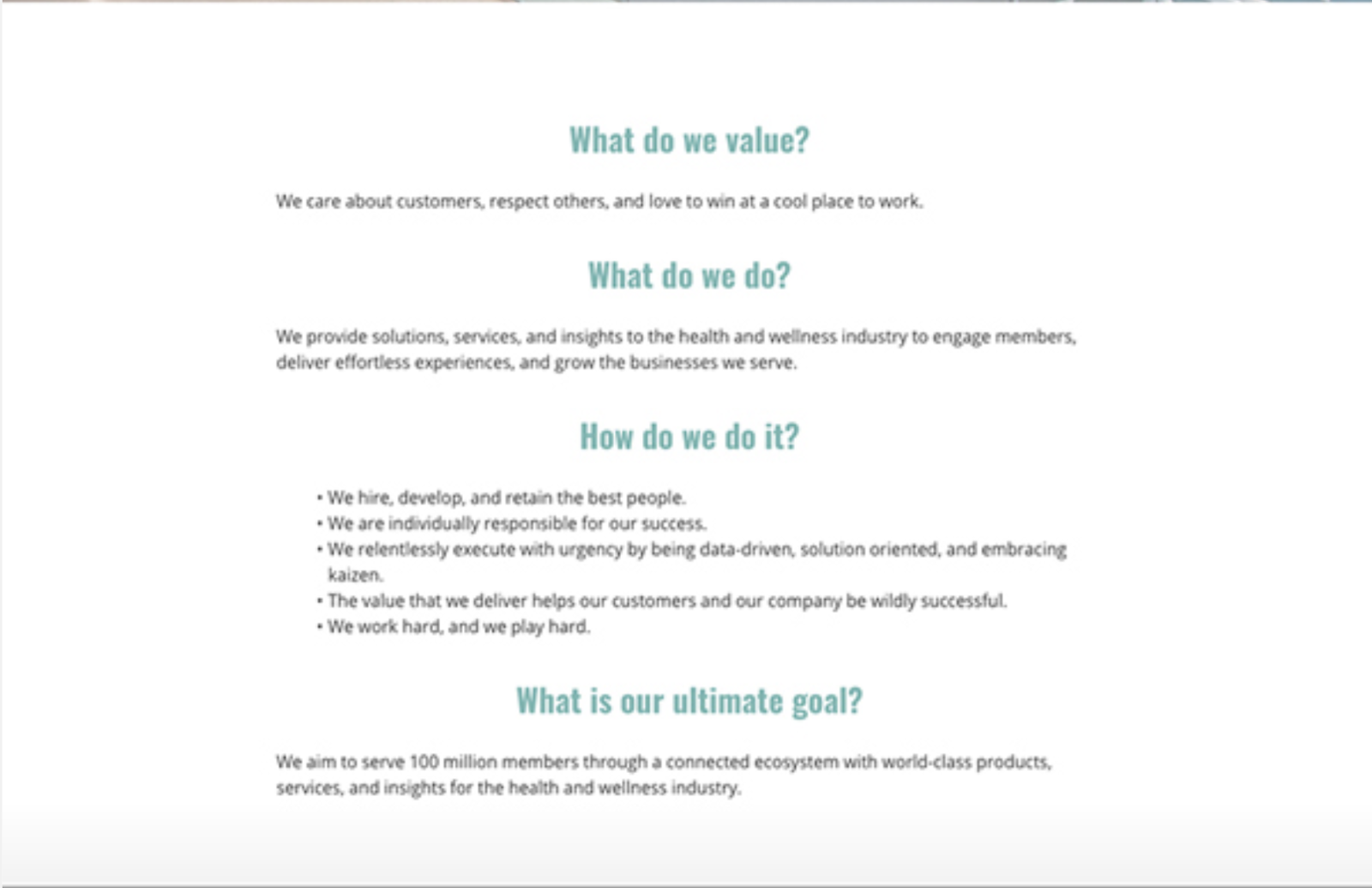
You can also include information about your company history and how you got where you are today. By capturing your origin story and key developments, employees better understand and appreciate the steps that brought you here.
For instance, SWBC, a financial services organization, starts its employee handbook with a detailed timeline. It informs readers of the company’s creation in 1976 and important milestones throughout the journey. This illustrates SWBC’s growth and achievements over the years using Blissbook’s built-in timeline feature.
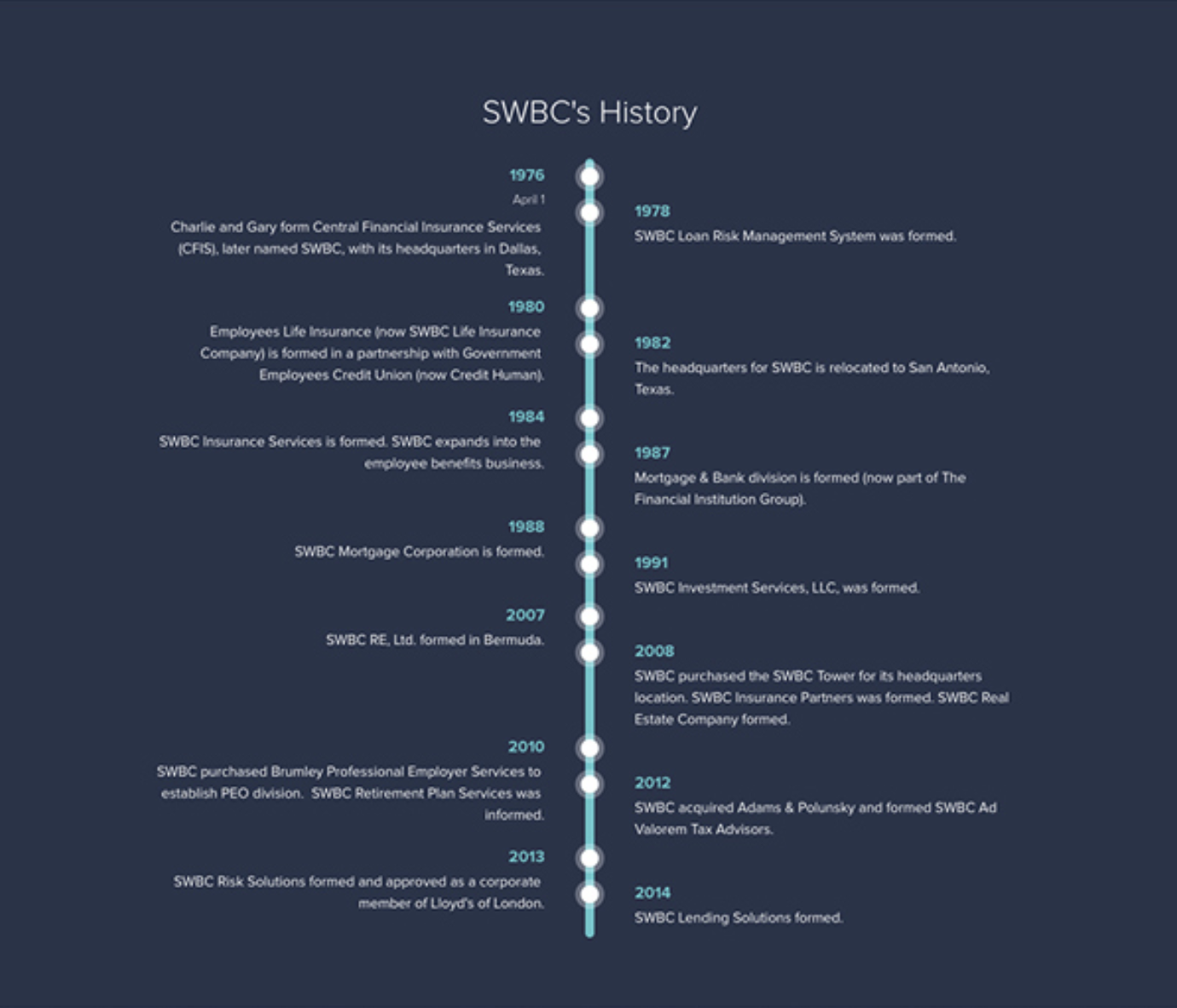
A Workspace for All
This section sets the fundamental tone for your organization’s inclusive culture and environment, focusing on broad policies that establish fairness, respect, and safety in the workplace.
Start this section with your equal employment opportunity policy, communicating your commitment to a diverse and inclusive work environment. This conveys that all employees have the same opportunities to succeed regardless of their background or personal characteristics.
This commitment to fairness is further emphasized by your anti-harassment policy, which should highlight the company’s zero-tolerance stance towards harassment. By placing this front and center, you can create a workplace environment that is safe, respectful, and welcoming for all.
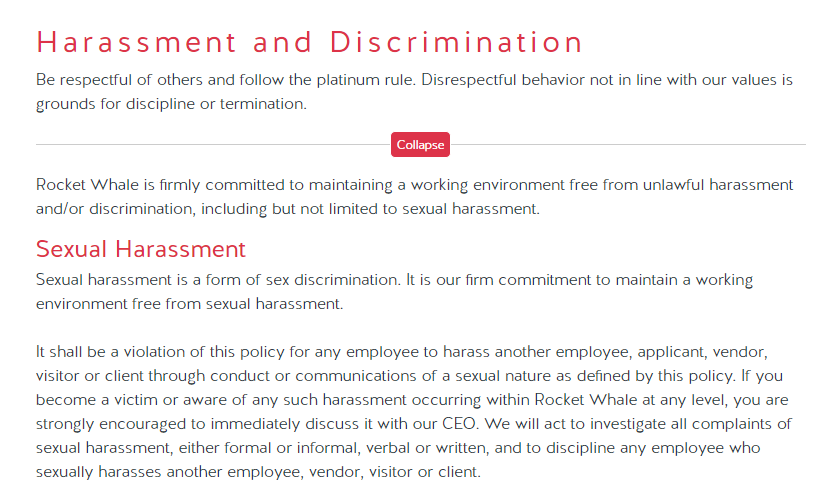
Another essential aspect to include is the provision for reasonable accommodations. This policy communicates your company’s commitment to inclusivity and demonstrates its willingness to provide necessary adjustments for employees who require them, further reinforcing equal opportunities for all staff members.
Your handbook should also address your policy on drugs, alcohol, and smoking. These rules are designed to help you maintain a healthy and safe workplace by providing clear guidelines on substance use and effectively communicating the prohibitions and restrictions related to drugs, alcohol, and smoking.
Time Off and Leaves
Your handbook should discuss your paid time off (PTO) policy, stating how much time off you grant your employees and the accrual process. It’s essential to specify how employees can request PTO and the protocol for its approval.
Your handbook should also list the recognized holidays. This section should clearly define which holidays the company observes and whether employees are entitled to paid leave on these days.

The sick leave policy is also a critical element. Your handbook should indicate the amount of sick leave granted to employees, how it’s accrued, and the process for reporting a sick absence.
Next, outline the Family and Medical Leave Act (FMLA). As per federal law, this section should provide information on an employee’s rights to take unpaid, job-protected leave for specified family and medical reasons.
Remember to clarify the company’s policy on workers’ compensation. Explain the protocol for reporting work-related illnesses or injuries, and the subsequent process for claims, in compliance with state laws.
Benefits
This part of the employee handbook should highlight the various advantages and perks offered by your organization. By emphasizing your benefits, you help ensure employee satisfaction, retention, and overall engagement.
Start by outlining the insurance coverage offered by your company. This could include health, dental, vision, life, and any other types of insurance available to employees. Detail the coverage levels and any eligibility requirements.
Next, detail the retirement plan benefits. Discuss the types of plans available (such as 401(k), IRA, or pension plans), including any employer matching contributions and the vesting schedule.
You’ll also want to highlight any referral bonuses available to employees who successfully refer a candidate who is then hired by the company. Outline the process, requirements, and terms of these bonuses.
If applicable, your handbook should also include information about educational assistance or tuition reimbursement programs. Detail how employees can avail themselves of these benefits, the types of education or training that qualify, and any repayment conditions.
Discuss the provisions for short- and long-term disability coverage. Explain how these benefits can protect employees’ income if they cannot work due to illness or injury, including the process for applying for these benefits.
You should also mention any other perks offered by your company. These include wellness programs, flexible work arrangements, discounts, or any other unique benefits your company offers.
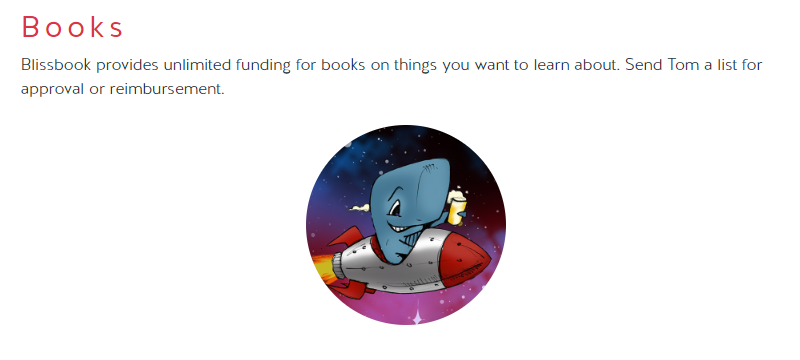
Compensation and Performance
The compensation and performance section is integral to setting clear expectations regarding compensation, performance standards, and disciplinary actions, which combine to create a productive work atmosphere.
Start by explaining job classifications like exempt, nonexempt, full-time, part-time, and temporary positions and how these classifications can affect employees’ compensation and benefits.
Highlight when and how employees will be paid, and explain the method for recording work hours. Include brief details about breaks and the policy on overtime, focusing on when and how they apply.
Next, outline the company’s approach to performance evaluations, including information on the frequency and criteria for these assessments. This information will clarify how performance ties to potential salary increases or promotions.
It’s essential to cover the expectations for employee punctuality, procedures for reporting absences, and the timing and length of breaks during a workday.
Wrap up this section by talking about disciplinary procedures and explaining how the company deals with performance issues or policy violations.
Office Life
This section aims to provide a comprehensive overview of the day-to-day work environment, helping to shape an atmosphere conducive to productivity, comfort, and mutual respect.
Here are some of the key points it should cover:
- Personal Appearance: Discuss the company’s dress code, emphasizing the balance between professional appearance and comfort in the workplace. Be sure to include any safety recommendations related to appearance.
- Remote Work: Outline the conditions under which remote work is allowed and the expectations for productivity and communication.
- Lactation Accommodations: Highlight the company’s support for nursing mothers, including the availability of lactation rooms and breaks.
- Solicitation and Distribution: Set out the company’s policy on solicitation and distribution, providing clear guidelines to maintain a productive work environment.

Business Conduct
This section focuses on the ethical and professional behaviors expected from employees. It should include:
- Code of Conduct: This outlines the company’s expectations for employee behavior, ethics, and professionalism.
- Open-Door Philosophy: Discuss your company’s commitment to open communication and how employees can share their ideas, concerns, or problems.
- Confidential Information: Address the importance of maintaining the confidentiality of company information and the potential consequences of unauthorized disclosure.
- Proper Technology Use: Provide guidelines on the use of company technology, including acceptable usage and security precautions.
- Social Media: Set out the company’s policy for social media use, both in terms of personal use and when representing the company.
- Conflicts of Interest: Discuss what constitutes a conflict of interest and the process for disclosing potential conflicts.
- Outside Employment: Describe the company’s policy on employees taking additional jobs, focusing on how to maintain productivity and avoid potential conflicts of interest.
- Reference Checks: Explain the company’s policy on providing references for current or former employees.

Separation of Employment
When an employee’s journey with the company comes to an end, the separation of employment section in the handbook provides guidance on the transition.
This includes explaining the resignation procedures, such as the notice period and the process to formally submit a resignation.
You must discuss the company’s approach to exit interviews and clarify its purpose as a way to glean constructive feedback and make necessary improvements.
Next, highlight the protocol surrounding the final paycheck, providing information on when and how employees will receive their final compensation.
Departing employees should be informed about their potential eligibility for extended health coverage under the COBRA benefits provision. Your handbook should briefly explain this process, highlighting that detailed information will be provided to those who qualify.
Acknowledgment and Signature Page
This is the often final part of an employee handbook, and it’s an essential component that documents an employee’s receipt of the handbook. Sometimes the acknowledgement or signature page also confirms understanding and acceptance of the information and guidelines provided in the handbook.
This page typically reiterates that the handbook doesn’t constitute a contract of employment and that the company retains the right to change its policies as necessary.
Employees are asked to sign the acknowledgment, and the completed form is kept in their personnel file. In some cases, a copy is returned to the employee for their records. When using a digital platform like Blissbook, you can easily view who’s signed and who hasn’t.
Create Your Employee Handbook with Blissbook
While it’s important to know what to include in your handbook, you should also present the information in a way that resonates with your employees. Blissbook makes this easy with features like Read More buttons to hide the details, video to showcase your people, and search capabilities to make it easy to locate specific information.
Are you ready to create a compelling employee handbook that truly speaks for your company? Take the first step towards building a happier, more informed workplace with Blissbook.
Reach out to us to set up a free trial today!